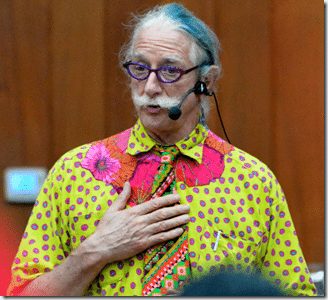Originally posted on October 29, 2015 @ 4:40 AM
What Safety and Risk Could Learn From Patch Adams
 Gesundheit – Toward Holistic Health
Gesundheit – Toward Holistic Health
Last night I watched the movie Patch Adams starring the late, and amazingly talented, Robin Williams. The story for those who don’t know it is broadly based around the work and life of the real life medical doctor called Patch Adams. The real Patch is the founder of the Gesundheit Institute, an alternative style healthcare facility that describes itself as:
The Gesundheit Institute is a 501(c)3 non-profit healthcare organization whose mission is to reframe and reclaim the concept of ‘hospital’. We are a model of holistic medical care based on the belief that the health of the individual cannot be separated from the health of the family, the community, the society and the world. (Source – http://www.patchadams.org/gesundheit/)
While I don’t pretend to know a lot about Gesundheit beyond what I have read today on their website, if they go anywhere near practicing their mission, I suspect that they are making impacts on lives in a much more meaningful way than our traditional reductionist approach to healthcare.
If we subscribe to the theory that wellness, healthcare and medical systems should have as their focus physical and biological health, and subsequently pay little attention to psychological and spiritual health, we are lead to a path that sees patients (I’d prefer to call them people or more preferably by their name) as objects and parts of a system.
In my previous article on the challenges that organisations face in dealing with mental health, I argued that;
“If organisations are to better support the mental health of their employees, adopting a more holistic approach, to firstly better understand, and then deal with mental health, and the wellness in general at work, is required.”
So what is a more holistic approach to both dealing with mental health at work and to responding to the challenges of health and safety at work generally? I wonder if the work of Patch Adams could provide us with some clues?
For a start, for those of you who don’t know the story of Patch Adams, the short version is that Patch was a medical student who struggled to exist within the ‘system’ or ‘establishment’ that is medical college. It wasn’t that he was necessarily a rebel without a cause; his real struggle was how people were treated in the traditional medical system, that is, as objects to fix, rather than people to be met. Patch’s approach was to see patients as people, not objects or numbers (sound familiar….) and he was focused not only on people’s physical health, symptoms and illness, but at the same time concerned with what was important for them as people. Patch it seems was more focused on people’s soul than the carcass within which it exists. So what are some examples from the way that Patch did things that might be relevant if we are to consider a more holistic approach to dealing with people and their safety, health and wellbeing at work?
There are some very telling and moving parts of this movie, and here are just a few highlights (I’ve included links to the scenes for those who haven’t seen the movie) that those of us working in risk and safety might find relevant and helpful:
· What’s her name? Why is it that in risk and safety we are so fixated on numbers, charts and labels. Why can’t we get to know ‘people’, call them by their names, ditch the labels and just talk to Mary? I get all the reasons about confidentiality, about labelling to reduce ambiguity and confusion, but do we do this too much? Patch knew people by their name, not their admission number of through a description of their symptoms.
· You Treat a Person – Some of my favourite quotes from the movie are; "You treat a symptom, you loose, you treat a person you win" and "Look beyond the objects and look through them". Why is it that risk and safety is so focused on symptoms and objects? How do we learn to love and understand people, not objects?
· Clowning Around – while the mater of health and safety is often framed up around it being a very serious topic and one not to be messed with, and in some circumstances I can understand this, I wonder if we need to take a leaf out of Patch’s book and lighten up a little? How do we bring fun, play, exploration and experiencing into risk and safety? If we were to play and experience more, would we get to know more about whom we are as people, more about our spirit and who we really are, rather than just as cogs in a machine? I know there will be many laughing at this suggestion, however, it’s not those people that I am writing this for, I lost them at point one when I suggested people are not objects. Such people already think I’m bonkers for suggesting that we don’t use labels or numbers, these people are fixated on fixing, and I’m very happy not to be among them.
So if you’re not amongst the group of people working in risk and safety who think it’s to treat people as objects and numbers, and if you too are prepared to challenge the establishment just like Patch, then maybe these ideas will work for you? Of course there will many people quick to remind you, just like the lecturers did to Patch that; "You don’t fit in here, there are standards and codes……"
I wonder what else Safety and Risk Could Learn From Patch Adams?
We’d love to hear your thoughts, experiences and comments.
Author: Robert Sams
Phone: 0424 037 112
Email: robert@dolphyn.com.au
Web: www.dolphyn.com.au
Facebook: Follow Dolphyn on Facebook



Do you have any thoughts? Please share them below